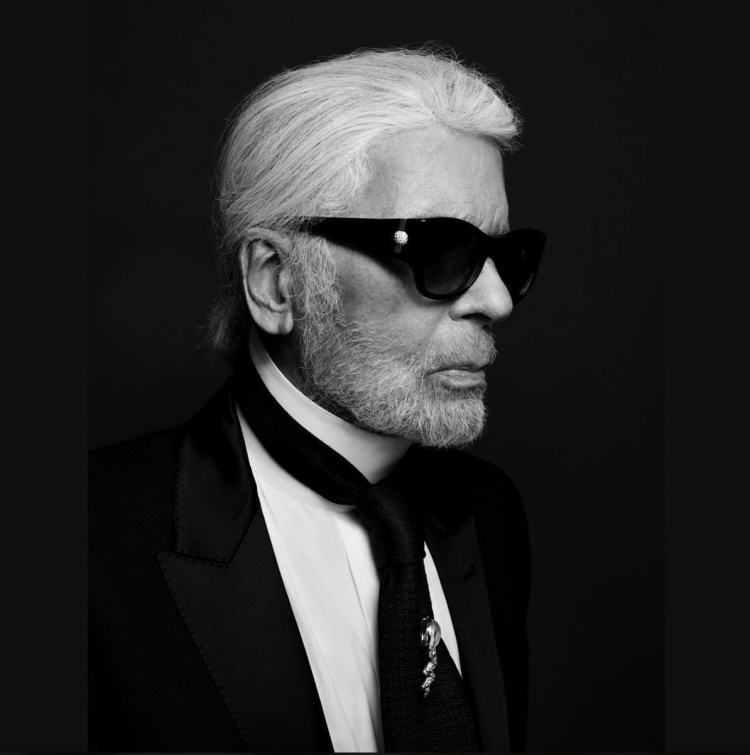Before and After Lagerfeld: Chanel's Eternal Legacy

Gabrielle Chanel was just 27 years old when she opened her first boutique in Paris. Initially a hat maker, her ingenuity was attributed to elegance and sophistication. Her hats were worn by many French socialites and actresses, which molded the reputation of her brand from the beginning.
As her business expanded, Chanel began to sew costumes for the ballet, along with other sportswear for the time. Her goal was to make the clothing as agile and comforting to the woman’s body as possible.
The first fragrance, Chanel No. 5, was released 11 years later in 1921. This has become the most iconic and timeless fragrance in the industry and has been Chanel’s best-selling perfume for over 25 years.
In 1924, she revolutionized the woman’s suit, following a traditionally masculine silhouette and introducing tweed into the garment. Two years following, she reinvented the Little Black Dress, coming out with the Ford dress, deemed by Vogue as “the frock that all the world will wear.”
Coco Chanel in 1920. Image Credit: Flickr/Kristine
Chanel passed away in 1971, and the fashion house fell dormant, only to be revitalized by a young German creative. All of Coco Chanel’s fundamental principles of design have been honored and sustained by Karl Lagerfeld’s unmatched vision and artistry.
Karl Otto Lagerfeld, creative director and fashion designer, was born in 1933 in Germany. Before rising to fame, Lagerfeld grew up in a loving environment with his parents and siblings. While details on his early life are unclear, Lagerfeld's love of fashion appeared in 1949 at just 16 during a fashion show hosted by Christian Dior.
While still at school, at the prestigious Lycee Montaigne in Paris, he nourished his passion for illustrations, majoring in drawing and history. During his time in the fashion industry, Lagerfeld collaborated with some of the most prominent designers including, Yves Saint Laurent, Pierre Balmain, Jean Patou. He also worked for prestigious brands including Fendi, Chloe, and Valentino. However, his works were most suitable in Chanel designs, where he managed to transform the traditional Chanel style into something more dynamic and modern. His universal and iconic image came from his recognition as the man with a white ponytail, black sunglasses, fingerless gloves, and a white starch collar: a true modern-day Dandy.
Karl Lagerfeld joined Chanel in 1983 where he quickly repositioned the brand as more cutting-edge than classic while introducing a new and successful business strategy known as category segregation. This new business model meant Chanel would offer exclusive high-end pieces alongside cheaper mass-produced items under the same label. A key element of Lagerfeld’s brand strategy was making sure Chanel was present in the fastest-growing categories of luxury which included shoes, jewelry, bags, and beauty.
Under the direction of Lagerfeld, Chanel was able to successfully create a breadth of product categories that allowed them to further their reach in the market. While the majority of consumers could not afford the haute-couture designs of the house, they could afford a lipstick with that same connotation of luxury. This business model proved to increase the influence and notoriety of Chanel as a brand, keeping it relevant and revolutionary in all facets of luxury. Chanel’s business strategy allowed it to maintain itself as a forerunner in the luxury market as seen in the $10B in sales it saw in 2018, despite the hit the industry had taken as a whole, as seen with the decreased sales of Louis Vuitton.
When considering distribution strategy, Lagerfeld embraced e-commerce in addition to maintaining more than 300 boutique retail spaces around the world, showrooms, and a presence in high end department stores. Chanel's distribution strategy went hand-in-hand with the promotion strategy. Lagerfeld remained relevant in popular culture, using muses including Ines de la Fressange, Claudia Schiffer, Vanessa Paradis, Kristin Stewart, Keira Knightely and Lily Rose-Depp to name a few. Furthermore, Lagerfeld initiated Chanel’s sponsorship of fashion shows and maintained their place in notable industry milestones such as Paris Fashion Week. Lagerfeld managed to keep the founding femininity and delicacy of the brand, while promoting their competitive advantage through their extensive product portfolio, while Lagerfeld himself embodied the reputation of Chanel as both timeless and innovative.
Today, Chanel is a 10 billion dollar entity, owned by Alain and Gérard Wertheimer. In the past 10 years, the company has more than doubled its value, mostly due to perfume and beauty sales. Lagerfeld was responsible for creating this prototype of the modern luxury industry. While maintaining iconic styles like the little black dress, boucle jackets, and quilted handbags, he was able to modernize Chanel designs, bringing them into the contemporary age. Lagerfeld was also known for popularizing certain silhouettes such as and inventing fashion items, as his style was a combination of high class and high camp. He managed to reinvent staples that would attract new generations and ensure Chanel stayed relevant. At the same time, Lagerfeld was responsible for buying dying workshops, helping to maintain a high level of craftsmanship in Chanel’s work.
All of Lagerfeld’s traditions will be carried on by his right-hand woman, Virginie Viand, and Chanel will return to the hands of a woman as it was at inception.
This article was reported by Fashion Systems class on February 20, 2019.








